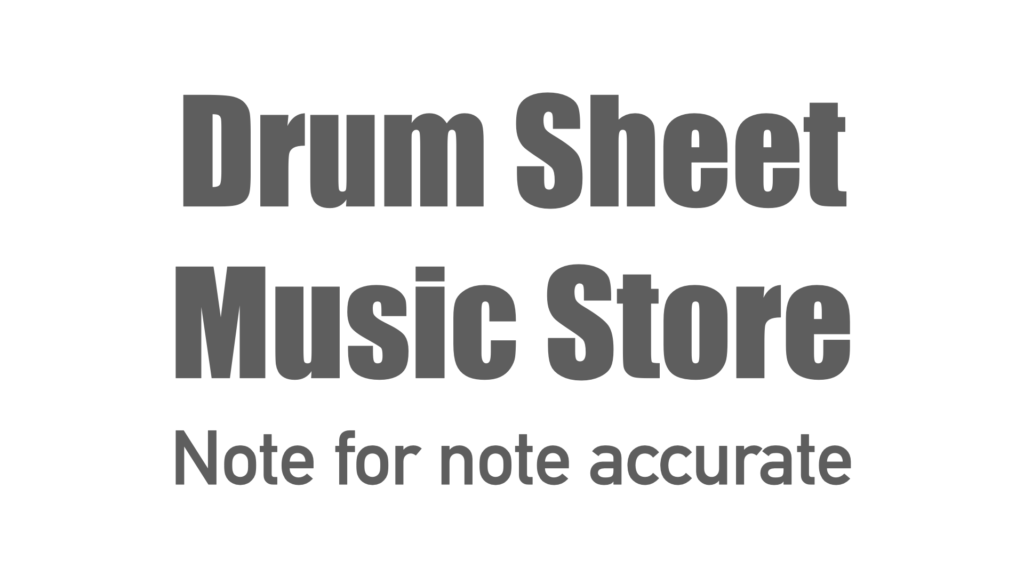Education
Drum Charts or Drum Transcriptions – Which Is Better?
Drumming is an essential component of any musical performance, be it rock, jazz, pop, or any other genre. When reading music for drums, there are two main types of documents that drummers may encounter: drum charts and drum transcriptions. While the two may look similar, they serve different purposes and require different levels of expertise to read and play accurately.
What are drum charts?
A drum chart is a simplified version of the drumming part in a song that provides a general map of what the drummer should play during the different sections of the song. Drum charts typically include the basic beat, fills, and transitions between different sections of the song. They may also include tempo markings, dynamics, and other important musical information. Drum charts are useful for live performances and studio recordings, where time is of the essence and improvisation is encouraged. They are also extremely common in Big Band drumming. Drummers can use drum charts to get a general idea of what they need to play, but they are not meant to be note-for-note accurate.
What are drum transcriptions?
In contrast, a drum transcription is a detailed document that includes every note, every fill, and every break played by the drummer. Drum transcriptions require a high level of expertise to create and read. The transcriber must have a thorough understanding of drumming techniques, rhythms, and notation. They must also have an excellent ear for music and be able to distinguish between different drum sounds and nuances.
What are the advantages or drum transcriptions over drum charts?
Drum transcriptions are useful for drummers who want to learn a specific song accurately or who want to study the drumming style of a particular drummer. They allow drummers to analyze the drumming part note-for-note and to get a better understanding of the technical and musical aspects of the song. Studying a transcription can also help drummers develop their listening skills, rhythmic accuracy, and phrasing.
Additionally, drum transcriptions are among the best teaching tool for music teachers and students to improve their drumming skills. One of the main advantages of drum transcriptions is that they offer a more comprehensive and accurate representation of the drumming part in a song. Drummers can use transcriptions to learn how to play a song exactly as it was recorded, which can be particularly useful for cover bands or tribute acts. Studying transcriptions can also help drummers develop their own style by analyzing the techniques and rhythms used by other drummers.
Another advantage of drum transcriptions is that they offer a more structured and organized approach to learning. Instead of trying to decipher the drumming part from a recording or a drum chart, drummers can use transcriptions to study the song in a step-by-step manner. This can help drummers identify patterns and recurring motifs in the song, which can in turn inform their own playing style.
Transcriptions as an educational tool
Drum transcriptions can also be a useful tool for music teachers and students. Teachers can use transcriptions to help students learn specific techniques, rhythms, and fills. Students can use transcriptions to study the drumming style of their favorite drummers and learn how to incorporate those techniques into their own playing. Transcriptions can also be a valuable resource for music schools and universities, where they can be used as part of the curriculum for drumming classes.
Conclusion
While drum charts are useful for live performances and studio recordings, drum transcriptions offer significant educational benefits for drummers. They allow drummers to study a song in greater detail, develop their skills, and gain a deeper understanding of the technical and musical aspects of drumming. Whether you are a beginner or an advanced drummer, studying drum transcriptions can help you take your drumming to the next level. By offering a more comprehensive and accurate representation of the drumming part in a song, drum transcriptions can help drummers improve their skills and develop their own unique
Here at the Drum Sheet Music Store, we specialize in providing drum transcriptions for drummers of all levels. All of the drum sheet music available on our website is note-for-note accurate transcriptions of the original drumming part in each song. Our team of experienced transcribers works diligently to ensure that every detail of the drumming part is captured in our transcriptions. We believe that studying drum transcriptions is an excellent way for drummers to improve their skills and learn from the best drummers in the world. That’s why we are committed to providing high-quality drum transcriptions that are both accurate and educational. Whether you’re a beginner or an advanced drummer, we have a wide selection of drum sheet music that can help you take your drumming to the next level.




